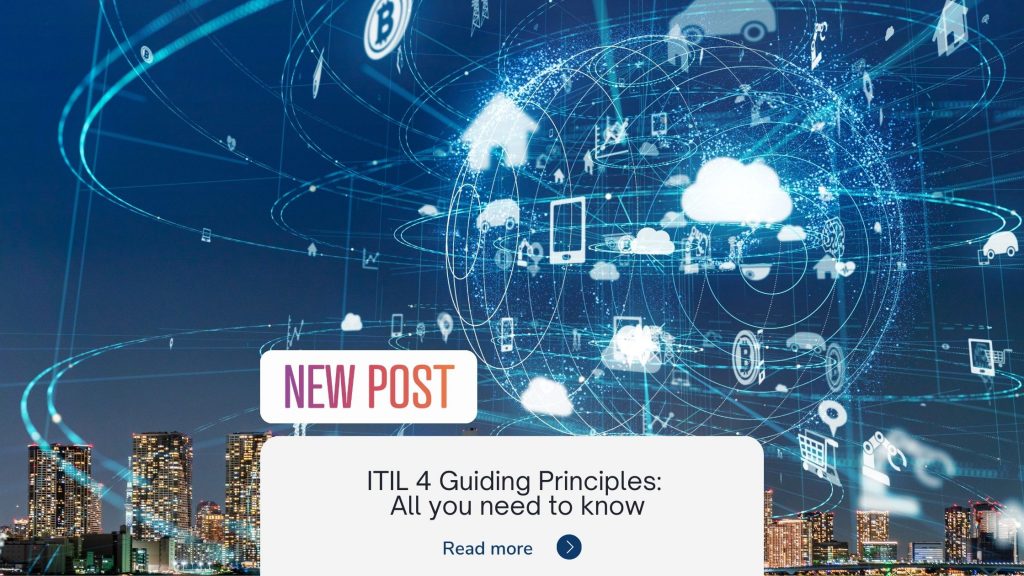If you want to know everything about the ITIL 4 Guiding Principles, then you’ve come to the right place. We’ll tell you all you need to know about these essential principles, including what they are, why they’re important, and how you can use them to improve your ITIL 4 implementation. Read on to learn more.
Introduction
The ITIL framework is designed to help businesses align their IT services with their overall business needs. ITIL outlines detailed best practices for ITSM, covering everything from service design and transition to service operation and continual improvement. By following the ITIL process, businesses can improve their efficiency and better meet the needs of their customers.
ITIL is still one of the most popular certifications that IT professionals seek out to help them further their career. Having been established over 40 years ago, ITIL has continued to receive positive reviews and feedback. Gaining your ITIL certification can help to open up new job opportunities, or aid in being promoted to the next level in your current role.
Table of Content
- What is ITIL 4?
- Seven Guiding Principles of ITIL 4
- Benefits of ITIL Processes
- Usage of Guiding Principles of ITIL 4
What is ITIL 4?
The ITIL 4, released in 2019, is the most agile, flexible, and customizable version yet. With a focus on value creation, it is the latest version of the Information Technology Infrastructure Library.
The UK cabinet office developed ITIL to reduce costs for the government and improve the quality of IT services. ITIL has evolved significantly over the years, and the current version is very different from the original.
The service management in ITIL 4 includes 4 dimensions:
1) Organisations and People
2) Information and Technology
3) Partners and Suppliers
4) Value Streams and Processes
The online-subscription method has cut down a considerable amount of time, rather than waiting for the publication of new books. ITIL 4 is the best practice delivery method available to extend benefits to the entire enterprise.
There are many levels of certifications available in ITIL 4. The ITIL 4’s certification schemes include:
a) ITIL 4 Foundation
b) ITIL 4 Managing Professional
c) ITIL 4 Strategic Leader
d) ITIL 4 Master
ITIL is highly valued in the IT industry for its ability to impart knowledge and skills to practitioners. This certification can lead to high-paying job opportunities with competitive salary offers.
Seven Guiding Principles of ITIL 4
The 7 Guiding Principles of ITIL 4 are designed for people responsible for operating and managing the Services of the Organization. They provide guidance in making decisions and validating actions that can benefit the Organization from these best-level practices.
The 7 Guiding Principles of ITIL 4 are
1) Focus on value:
The term “value” doesn’t just apply to finance – it’s also about how your service benefits and creates a positive experience for your users (UX) and customers (CX). You can only achieve great results if you take the time to research who is using your services, and how your services can provide value for them.
Anything and everything the organization implements should create values for the customer, self, and stakeholders. You must also consider employees, regulators, shareholders, and society. It is crucial to understand the customer’s experience and perspective relevant to service and organization to deliver the expected value.
2) Start where you are:
It is not required to start something from the start. Instead, you can consider improving on what you have been currently working on. In the pretext of a complete replacement, you do not have to build something new if you can avoid dumping the current project, as it can save you ample time and effort.
It saves time and effort and aids in maintaining people on board while helping you preserve its value. The previous endeavours will support the changes experimented with their contributions that have been appropriately valued.
While you indulge in assessment – it is improper to depend only on metrics and reports to analyse the present situation. Instead, you can gain better benefits when you observe the current situation and come to a conclusion.
3) Progress iteratively with feedback:
It can be tempting to try and take on too much all at once, but it’s important to resist that urge and break the work down into manageable chunks. This will help you stay focused on what needs to be done and get it done more quickly and efficiently.
With a clear focus and the right team to help you, you can maintain control over projects that have the potential to bring in great investments and deliver the expected value. Once you’ve received the outcome or results, you can review the feedback to identify any issues, risks, or opportunities.
4) Collaborate and promote visibility:
Collaboration does not just happen with your team members and service providers. It involves your users, customers, vendors, and anyone related to the services.
You are supposed to be transparent about what is happening in the current scenario for a collaboration to be successful and effective. If the complete team is updated concurrently on the relevant information; and has a brief idea about what is happening, it saves a lot of time and effort for everyone to collaborate seamlessly.
Many people who work in isolation and are involved in individual tasks may perform outstandingly. But, the same people might find it strenuous to adapt to a collaborative work environment, as they are expected to be flexible and adapt to the latest changes. After understanding the concept, they can perform better each time after a while with everyday practice and few rehearsals.
Eventually, people working in collaboration with an agenda can bring significant impact and value to the customers, partners, and everyone associated with the organisation.
5) Think and work holistically:
When working in a collaborative environment, it is crucial to consider how your work might affect other parts of the organization. Every department is interconnected, so you need to think about the possible ripple effects of your decisions before making them.
By considering the impact your work might have on the whole organization, you can make sure that your decisions are beneficial for everyone involved.
6) Keep it simple and practical:
As opposed to adhering to the standard methods, it is better to stick to the basics which will generate more value. If you feel that the extra, complex steps are not absolutely necessary, then don’t do them.
Anything that is creating a barrier to value should be avoided. Be practical and use the minimal amount of steps needed to get the job done. Your process should be able to cover the basics and adapt to various situations. You can train your team according to the specific requirements and difficulty of each circumstance.
7) Optimize and automate:
Optimising means making something functional and applicable. Before automating an activity, it should be optimised to a certain degree to utilise the resources to the best of their limits.
It is better to start the process manually to optimise the workflow. You can automate the process once you feel it is efficient to use all the tools and resources effectively.
Understanding the differentiation between which of the processes needs to be manually designed and which can be automated is highly significant when making a decision to avoid any resource wastage.
To understand the basics of the ITIL framework, Join ITIL® 4 Foundation Certification Training Course now.
Benefits of ITIL Processes
The ITIL 4 Guiding Principles can help you save time by creating uniform guidance and procedures for your team. By following these principles, you can avoid spending too much time on tasks that could be completed more efficiently.
Here are the following benefits of ITIL Processes:
1) Cost Minimisation
2) Practical and effective utilisation of resources
3) Better alignment between the organisation and the IT department
4) Intelligible expectations briefed up for customers and IT service desk
5) Assets Visualisation
6) Better control over risks, service disruptions, and system failures
Usage of Guiding Principles of ITIL 4
The organization should always refer to the guiding principles before making any decisions. This is because each principle has its own value and when they are combined, they can provide even more value. The organization does not need to select just one or two principles to apply, but rather it should try to use all of them together to get the most out of it. By doing this, the organization can make wiser decisions and design better improvement plans.
If you are making any improvements or planning a new process, you can get a printout of these Guiding Principles and stick it around the working area or desk to remind you of what is paramount.
Conclusion
In this blog, we have discussed ITIL 4 and its seven Guiding Principles. Organizations should understand the relevance of each guiding principle and not apply only one or two of them. Instead, consider entangling them together based on the necessity of the given situation. For example, if you need to focus on speed, then you might apply the first three principles: Focus on value, start where you are, and Progress iteratively with feedback.
If you’re interested in becoming an ITIL 4 certified professional, TopD Learning offers ITIL® 4 Foundation Certification Training Course which provides extensive training with highly experienced trainers. It’s a great way to start off your career in something new and exciting. If you have any questions, don’t hesitate to reach out to us and we’ll be more than happy to help clear things up for you.
You’ll be glad to know that we have a variety of technologies & courses available so you can learn what you want at your own convenience.
So what are you waiting for? Enrol now or contact us so we can help you in choosing the best course(s) for you!!


